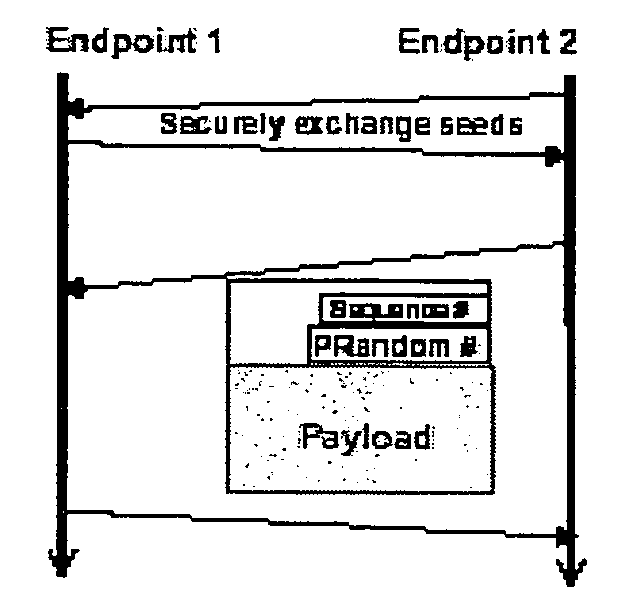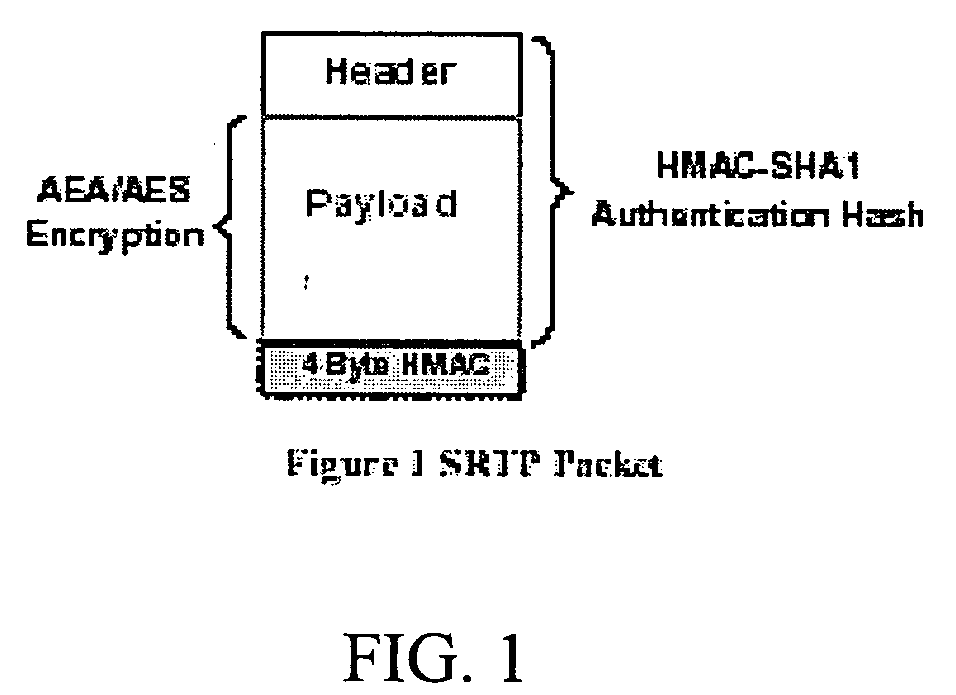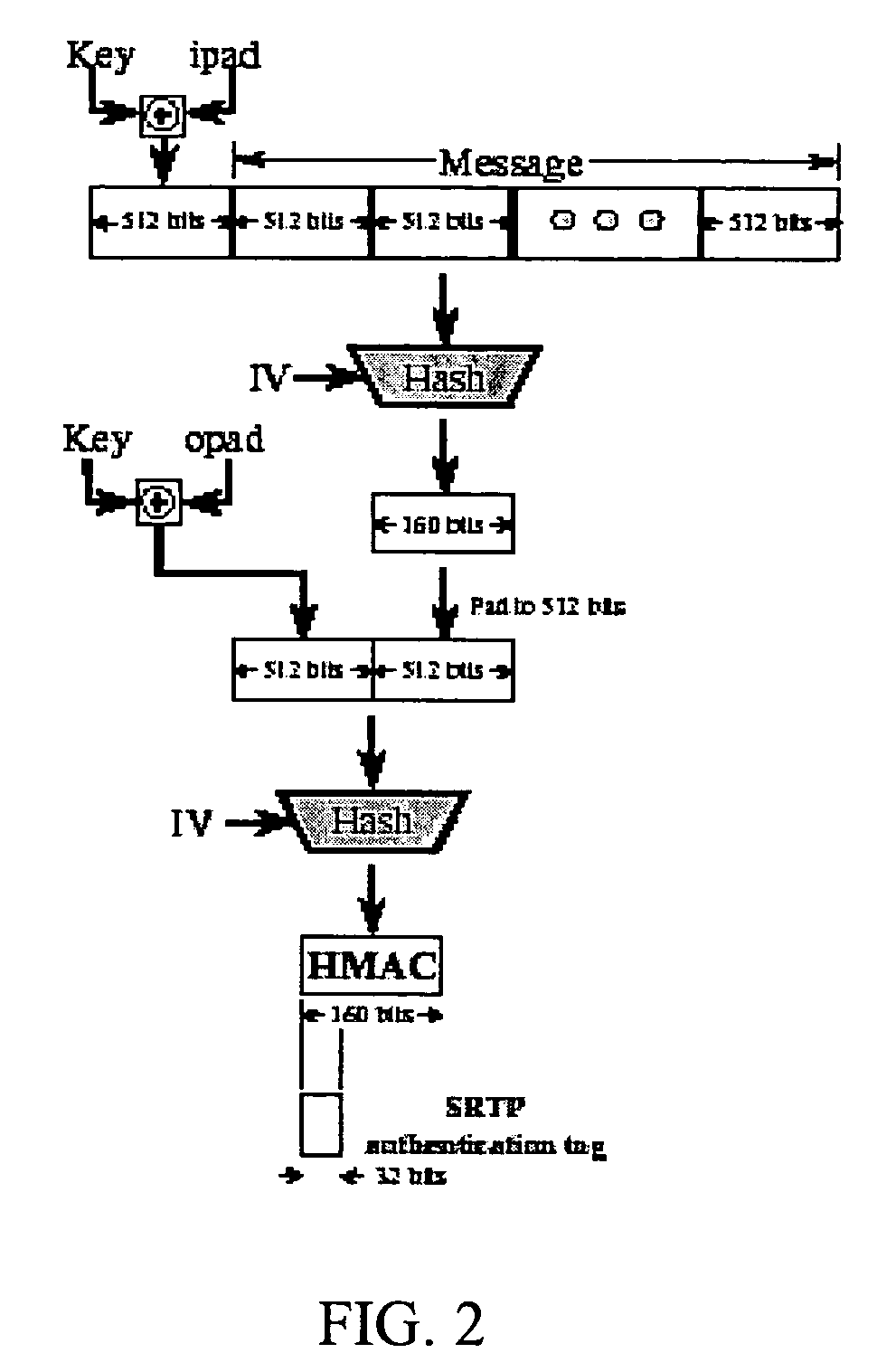Method for real-time transport protocol (RTP) packet authentication
a real-time transport protocol and packet authentication technology, applied in data switching networks, digital transmission, securing communication, etc., can solve problems such as constant overhead, and achieve the effect of reducing the maximum processor cycle consumed and constant overhead
- Summary
- Abstract
- Description
- Claims
- Application Information
AI Technical Summary
Benefits of technology
Problems solved by technology
Method used
Image
Examples
embodiment 1
[0038] 1. Secret Pseudorandom Number Sequence (Embodiment 1)
[0039] In this embodiment the authentication tag is a number in a cryptographically secure pseudorandom number sequence. Each RTP packet is assigned a pseudorandom number based on its sequence number, as shown in Table 1. Each RTP packet has a sequence number which is included in the packet in a 32 bit field. For use in Avaya products, the pseudorandom number generator (PRNG) must be FIPS-140 approved. There are many PRNGs available including ones which are extremely efficient (because they are extremely simple). Since the PRNG is being used for security, it needs to be “crypto secure” itself. The Federal Information Processing Standard has approved some PRNGs which are “crypto-secure”. One such approved PRNG is based on a cryptographic hash, such as SHA1, as shown in FIG. 4.
TABLE 1Assignment of Pseudorandom NumberBased on Sequence NumberSequence #12. . .10021003Pseudorandom numberR1R2. . .R1002R1003
[0040] Further details...
embodiment 2
[0050] 2. Sequence Number / Timestamp Hash (Embodiment 2)
[0051] An alternative to Embodiment 1 avoids the need to maintain a sliding window to remember previously calculated pseudorandom numbers. Instead of using a PRNG, the sequence number and timestamp in the RTP header are hashed using a cryptographically secure hash, such as HMAC-SHA1 to obtain the authentication tag. Thus, each packet is independently verified. Out-of-order and dropped packets do not affect the authentication process.
[0052]FIG. 6(A) shows the communication between the two endpoints. As can be seen in FIG. 6(B), this embodiment is similar to SRTP, except that the message authentication code only authenticates part of the header instead of the entire header and payload. Thus, it should come as no surprise that such a performance savings is realized by applying the same secure hash to a smaller set of bits.
[0053] In particular FIG. 6(B) highlights the steps of this embodiment [0054] Selecting a key on Endpoint 1 (...
embodiment 3
[0061] 3. Secret Random Number Chaining (Embodiment 3)
PUM
 Login to View More
Login to View More Abstract
Description
Claims
Application Information
 Login to View More
Login to View More - R&D
- Intellectual Property
- Life Sciences
- Materials
- Tech Scout
- Unparalleled Data Quality
- Higher Quality Content
- 60% Fewer Hallucinations
Browse by: Latest US Patents, China's latest patents, Technical Efficacy Thesaurus, Application Domain, Technology Topic, Popular Technical Reports.
© 2025 PatSnap. All rights reserved.Legal|Privacy policy|Modern Slavery Act Transparency Statement|Sitemap|About US| Contact US: help@patsnap.com



